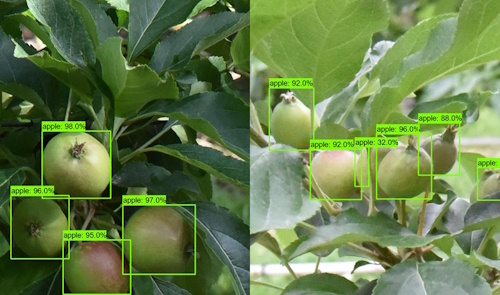
The project involved capturing thousands of images of flowers, fruitlets and fruit counts on trees
Question: How does an orchardist know how big their harvest is likely to be? Answer: By counting the fruit, of course.
But that counting can be time-consuming and tedious – and needs to be done not once, but at least twice.
First orchardists count how much fruit has set, and how much needs to be thinned to ensure maximum quality. Then they need to count again, check that the thinning has been done properly.
As Rob Holtham, manager of Willisbrook Orchards in the Tasman District says, that can be a very time-consuming and tedious task. It’s also a fairly skilled one: “It needs to be reasonably accurate,” he says.
Which is where a successful six-year project funded by the Ministry for Primary Industries (MPI) and New Zealand Apples and Pears Inc (NZAPI), has made a real difference.
“Thinning apple trees to set a precise number of apples per tree – the crop load – early in the growing season improves the outcome for achieving premium-priced fruit sizes and crop quality,” says Rachel Kilmister, NZAPI’s R&D Programme Manager. “Typically the crop load will vary between individual trees and orchard blocks.
“This project set out to support the grower’s decision-making by improving how crop load is monitored on trees.”
The project involved the practical, on-the-ground involvement of orchardists such as Rob to capture thousands of images of flowers, fruitlets and fruit counts on trees.
Those images were then manually labelled and Lincoln Agritech’s Precision Agriculture team processed them using an artificial neural network (ANN). They used a specialised ANN called a convolutional neural network (CNN) that is designed to extract and interpret features from the canopy images. These features are then combined in the model to form regions that are classified into fruit and non-fruit. The regions represent individual fruit, which are automatically counted to provide the crop load estimate.
The result? An app that growers can use to take photos of trees that have been thinned, to assess whether thinning targets have been achieved.
“With their mobile phones, growers were able to take photos of trees that had been hand-thinned, to quickly assess whether they had achieved thinning targets,” Rachel. “The app was able to quickly provide fruit count data from the photos, so that growers could make adjustments, ensuring they met their thinning targets.”
The trials completed last year showed the app could achieve an accuracy of 85-90%, which is acceptable to the industry.
Although this wasn’t part of the trials, Rob – who was one of the growers involved – says he can also see it being used it before thinning to establish how much each tree needs to be thinned by.
Rob’s impressed not only by the skill that’s gone into developing the app, but by what it means for growers on the ground.
“It changes the skill set required to do the job,” he says. Usually, it takes a couple of half-days of training for someone to assess crop load manually, and in many orchards – including his – it’s a task that’s left to supervisors. “A less skilled person can now do that part.”
The next step is to find a commercialisation partner for the app, so that it can be rolled out to apple and pear growers nationwide.


